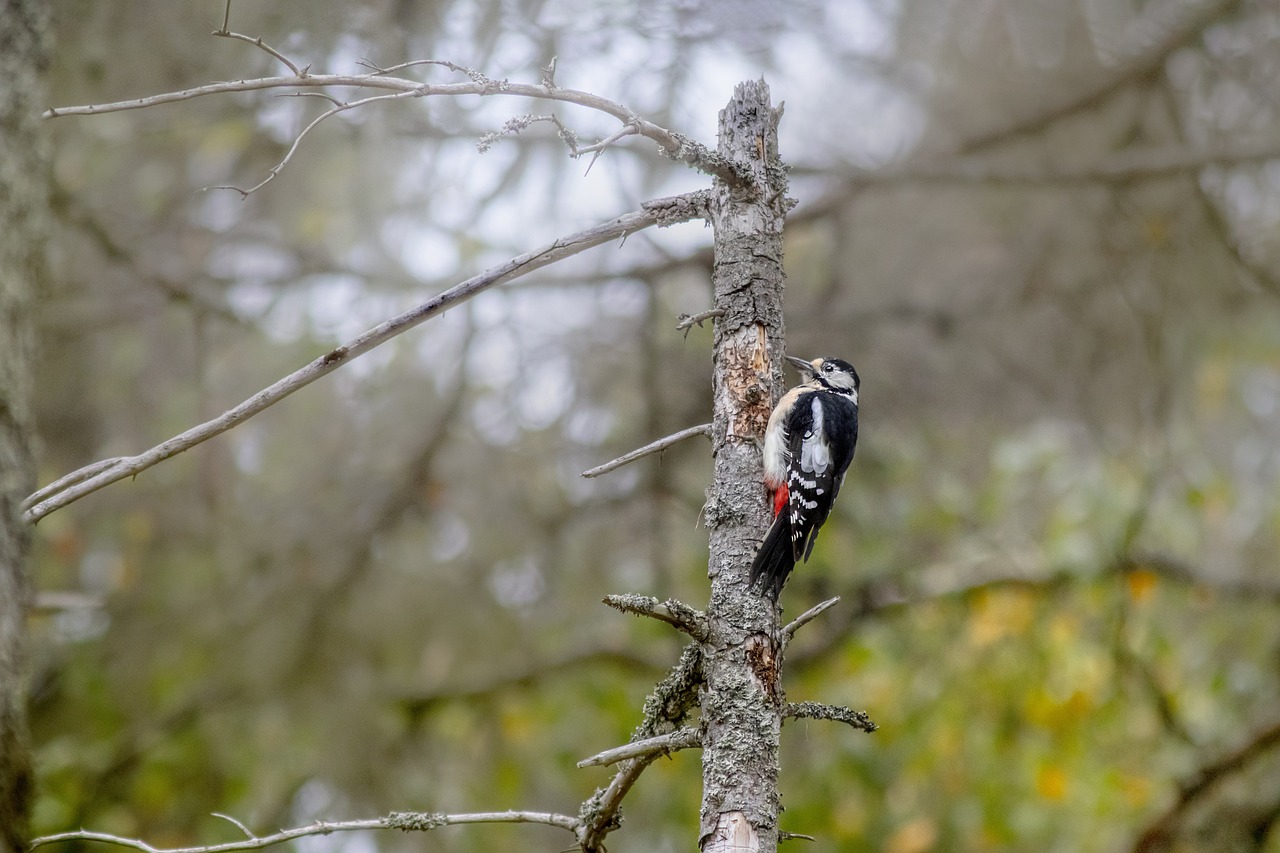Here’s a complete natural history profile of the Great Spotted Woodpecker (Dendrocopos major), one of Europe’s most widespread and familiar woodpeckers:
Great Spotted Woodpecker (Dendrocopos major)
Taxonomy & Classification
- Kingdom: Animalia
- Phylum: Chordata
- Class: Aves
- Order: Piciformes
- Family: Picidae (woodpeckers)
- Genus: Dendrocopos
- Species: D. major
General Description
- Size: 23–26 cm in length; wingspan 38–44 cm.
- Weight: 70–100 g.
- Plumage:
- Black and white upperparts with bold contrasting markings.
- White cheeks and shoulder patches.
- Red undertail coverts.
- Males: Red patch on the nape.
- Females: Lack the red nape patch.
- Juveniles: Red crown, which fades as they mature.
- Bill: Strong, chisel-like, adapted for drilling wood.
- Feet: Zygodactyl (two toes forward, two backward), for gripping bark.
Behavior & Lifestyle
- Foraging:
- Specializes in excavating wood for insects and larvae.
- Known to wedge nuts or pine cones into crevices (called “anvils”) to hammer them open.
- Opportunistic — in winter also eats seeds, berries, and visits bird feeders.
- Drumming:
- Rapid bill-hammering on dead wood serves as a territorial signal and courtship display.
- Each individual’s drumming rhythm can be distinctive.
- Flight: Undulating, with alternating flaps and glides.
Diet
- Primary food: Wood-boring beetle larvae, ants, and other insects.
- Secondary food: Nuts, seeds (especially pine), berries, and occasionally bird eggs or nestlings.
Reproduction & Life Cycle
- Breeding season: April–June.
- Nest: Excavated in dead or decaying trees; both sexes help carve out the cavity.
- Clutch size: 4–6 glossy white eggs.
- Incubation: ~10–12 days, shared by both parents.
- Fledging: Chicks leave the nest after about 20–23 days, fed by both parents.
- Family bonds: Parents defend nest vigorously against intruders, including other woodpeckers.
Habitat
- Found in a wide range of wooded environments:
- Deciduous and mixed forests
- Parks and gardens
- Farmland with scattered trees
- Requires mature trees for nesting cavities and foraging.
Geographic Range
- Widespread across Europe and Asia, from Iberia to Japan.
- Absent from Ireland and northernmost Scandinavia, but expanding in some areas.
- Non-migratory, though some northern populations may move south in harsh winters.
Ecological Role
- Predator: Controls populations of wood-boring insects.
- Ecosystem engineer: Creates tree cavities that are later used by other birds (e.g., nuthatches, owls, tits) and mammals (e.g., bats, dormice).
- Seed disperser: Helps open cones and spread seeds.
Special Adaptations
- Shock absorption: Skull and bill adapted to withstand repeated hammering without brain damage.
- Long, sticky tongue: Can extend far beyond the bill to extract insects from deep crevices.
- Cavity creation: Ability to excavate nesting sites in otherwise impenetrable wood.
Conservation Status
- IUCN Red List: Least Concern.
- Population trend: Stable or increasing in many areas.
- Threats:
- Local declines from loss of mature trees due to logging or urbanization.
- Competition for nest sites with invasive species like the Rose-ringed Parakeet in some cities.
- Conservation measures: Retention of deadwood and mature trees in managed forests supports population health.
Interesting Facts
- Their drumming can reach 10–15 strikes per second.
- Known to sometimes raid nests of smaller birds for eggs or chicks.
- Juvenile Great Spotted Woodpeckers often beg noisily and can be heard before they are seen.
- Increasingly common at garden bird feeders, where they often take peanuts and suet.
Visited 851 times, 5 visit(s) today
Views: 1103
Subscribe to the newsletter:
